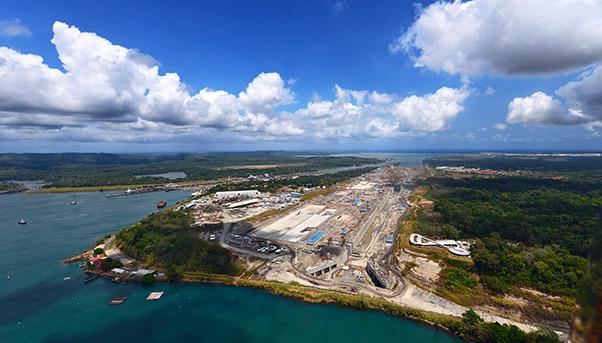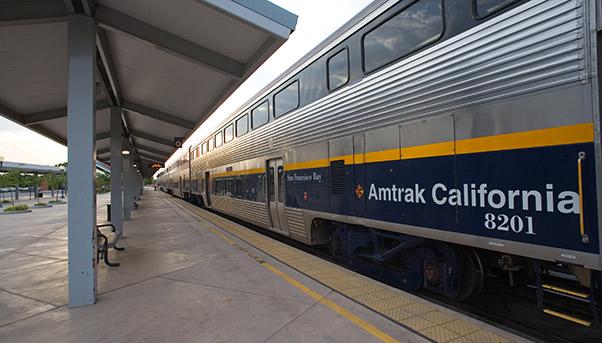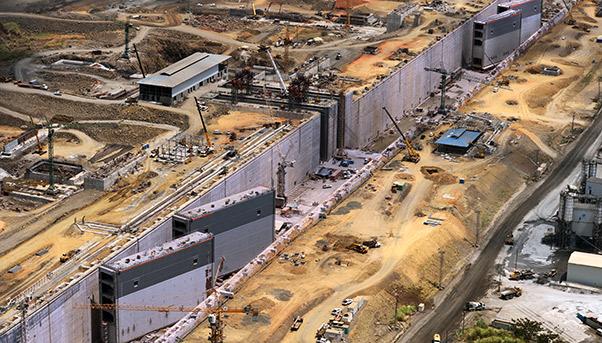
The world of public infrastructure is pushing ahead with four landmark projects that put on display engineering excellence as well as the growing need for ever more complex works capable of shaping lives, commercial relations and economic systems of entire continents rather than single countries.
A high-speed train in California, the new canal in Panama, an economic corridor between China and Pakistan and the Riyadh metro system: these are the four mega projects being developed that distinguish themselves with their scale, technical complexity and future economic impact.
These projects also confirm the vitality of the infrastructure market this year – as had been confirmed by consulting firm KPMG in its report “Global Infrastructure Perspective”, which described it as an important moment for growth. Some of the factors lending support to the sector include greater flows of international capital, new requirements to meet and aligning of government policy with the needs of citizens.
It is a trend that began in 2015. According to the “2016 Preqin Global Infrastructure Report” published a few weeks ago by the eponymous provider of data and research to the financial industry, investments in infrastructure have met or exceeded expectations of 76% of investors. All of this finds confirmation in the new constructions sites and ongoing ones, expressing their maximum value in the four biggest projects.
High Speed in California
The California High-Speed Rail system is a visionary project as much for the size of the investment as for its capacity to revolutionize the transport system of the U.S. state.
It will allow people travelling between San Francisco and Los Angeles to reach their destination in less than three hours. Trains will cover the 837-kilometre stretch between the two cities at a speed of 354 kilometres per hour.

Work began in 2015 after nearly 20 years of planning and debate. It is forecast to be completed by 2029. This is due in part to the terrain as well as the technical characteristics of the project, whose cost will reach $68 billion, making it the most expensive public work in U.S. history.
Private companies are building the new country’s most innovative rail system after a public tender.
But the finished project does not end here because it is expected to extend for another 1,287 kilometres to reach Sacramento in the north and San Diego in the south. It is an extension that still remains on the drawing board.
Panama: a Highway between the Oceans
After seven years of hard work, the new canal of Panama is approaching its inauguration. It is probably the most significant engineering work in the world for its economic impact, history and fascination.
The new canal, built by Grupo Unidos por el Canal (GUPC) of which Salini Impregilo is a member, will allow the huge, so-called post-Panamax ships (366 metres in length with a holding capacity of 13,600 containers) to give a boost to global trade.
Every year, goods worth $270 billion pass through the isthmus. But in 2016, they could triple in value. That is not all: the passage of these big ships will give a lift to maritime trade by encouraging the expansion of ports so they can receive these giants of the sea. Miami, New York, Norfolk in Virginia and other cities in the United States are investing heavily to improve their port facilities. The same thing is being done in Europe in places like Liverpool. The goal is to receive this new flow of post-Panamax ships along the 144 routes that 12,000 ships follow as they pass through the Panama Canal.

In order to accomplish this imposing project (250,000 tonnes of concrete steel, 4.7 million cubic metres of concrete and 52 million cubic metres of excavated earth), the most advance engineering techniques had to be sought in addition to hiring of a huge labor force of up to 20,000 people. The Panama Canal Authority (ACP) (the public entity that always managed the canal) is expected to reap enormous benefit from it. If the existing canal generates an average of $2.5 billion in income a year, the authority has calculated that the new one will double that figure in direct income and benefits to the surrounding economy.
A Corridor between China and Pakistan
Combine transport with energy production and create a corridor for people and merchandise that unites some of the most vital markets in the world from southern Asia to the Middle East to Africa.
This is the idea that inspired the drafting of a blueprint for an economic corridor between China and Pakistan. It would act as an intermodal highway in every sense of the word, bringing together roads, rails and power lines capable of connecting Kashgar in western China with the Pakistani port of Gwadar.The heart of the project is the construction of the Karakoram highway. Begun this year, it is accompanied by 10 other infrastructure projects. The idea to connect China and Pakistan is so strategic that the Chinese authorities announced that they had raised $46 billion of foreign investment for its completion.
It will consist of highways, railroads and an energy corridor linking the two countries. In 2017, construction is expected to begin on hydroelectric, solar, wind and coal plants able to produce a total of 10,400 megawatts of electricity.

Riyadh Metro
Begun in 2013 and to be completed by 2018, Riyadh’s underground metro is the biggest network ever to have all its lines built at the same time.
The projects involves the construction of six lines at the same time, running a total length of 176 kilometres with another 1,150 kilometres to be covered by a bus network. It is a colossal project at a cost of $22.5 billion that will include 85 stations, 11 bridges, 26 kilometres of tunnels. Some of the major international builders of public works are involved. Among them Germany’s Siemens, Alstom of France, Canada’s Bombardier and Italy’s Salini Impregilo. As a member of the ArRiyadh New Mobility group, Salini Impregilo is involved in the construction of Line 3, the longest of the six lines, stretching for 41.2 kilometres with 22 stations at a cost of $5.94 billion.
The project, which involves more than 50,000 workers, is also an example of beauty and architectural style. Many of the stations have been designed by star architects such as the late Zaha Hadid and the firm Snøhetta.
Its unique value to the world is its ability to respond in a few years to the demographic explosion that the city is undergoing and the resulting demand for more public transport. By 2030, the city is expected to see its population reach 8.2 million from 5.7 million. At full capacity the Riyadh Metro will be able to accommodate three million people every day.

